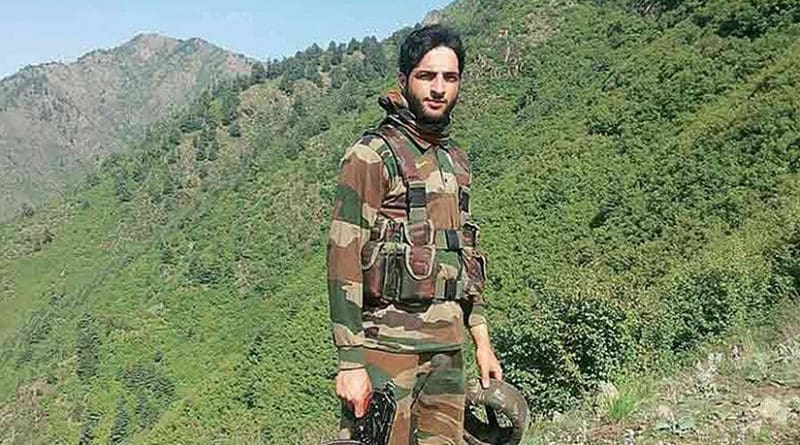Kashmir Crisis Won’t Fade Away: Need To Engage Responsible Stakeholders – Analysis
By Gaurav Dixit*
The killing of the Hizbul terrorist ‘commander’ Burhan Wani and the series of incessant violent protests in the Kashmir Valley have again opened a Pandora Box of troubles for the Indian government.
Despite having witnessed similar form of violence in the past, the Indian government has not managed to grasp the dynamics of the new wave of protest in the Valley. Evidently, the centre has failed to receive new wisdom from past experience and has been unable to counter violence that has been going on for long. The Kashmir conflict has always thrown a new challenge to Indian state. The dimensions, level and the intensity of violence may vary, but the challenge has always been to bring all the stakeholders on the table of talks together to find an amicable solution to the problem of violence in the Valley.
Like other conflicts in the world, South Asian conflicts too are shaped by interplay of external and internal players. Conflict has both responsible and irresponsible stakeholders. In the case of trouble in Kashmir, Afghanistan and to some extent in Bangladesh, external players have been important destabilizing factors. In Kashmir and Afghanistan, Pakistan is an important external factor and is inevitably a crucial stake holder.
Amid growing tension between India and Pakistan in the recent months, it appears that Indian government is rethinking about the ‘stakeholder’ approach, and trying to internalize the peace process as much as possible.
Pakistan’s demand for separate talk with India on the issue of Kashmir on the basis of the UN resolutions on Kashmir has been thoroughly rejected by India.
“We have seen statements from Pakistan on the situation in Indian state of Jammu & Kashmir. They reflect Pakistan’s continued attachment to terrorism & its usage as an instrument of state policy,” was the response of Indian MEA spokesman Vikas Swarup.
However, India has not retracted from its stand on Kashmir being a bilateral issue. In fact, Minister of State for External Affairs M J Akbar has recently said that Pakistan should not internationalise the Kashmir issue, adding that it is a bilateral issue.
As far as the role of some of the internal stakeholders is concerned, it is often shaped by the views and stand of external stakeholders. In Kashmir, the separatist involvement is regularly influenced by the stand dictated by Pakistan.
The question often asked is whether separatist like Hurriyat Conference has been a legitimate and responsible stakeholder or not. The peace process since the armed rebellion in Kashmir in 1989 has witnessed a considerable number of stakeholders, but Hurriyat, it appears, has assumed exclusive and sole role to represent Kashmiris’ aspirations.
Hurriyat’s past record has supposedly raised question over its commitment to peace process. In 2006, it boycotted two Kashmir Roundtable Conference initiated by then PM Manmohan Singh on flimsy grounds. It has flip flopped on various occasion, when it comes to composite dialogue. The ordinary Kashmiris and other civil society groups have been regularly overlooked as major stakeholders in the issue and their exclusion from dialogue exercises has a huge impact on their confidence in the dialogue process.
According to Ajai Sahni, “the government should ensure that people who are benefiting from violence are brought to a stage where they can secure no benefit instead of trying to reward them with a privileged place in the negotiating process.”Such an approach demands a fresh perspective to understand the concept of ‘stakeholders’ in the Valley and it also highlights the gaps in Indian approach in the past, where those who were engaged in flaring violence has been rewarded with stake in dialogue process.
In practical terms, it is nearly impossible to have internal communication with groups whose interests are devious and does not align with the interest of the people. Secondly, multi dimensional stakeholders approach requires involving new groups, extremely negative and conflicting stakeholders rarely have been productive.
An attempt should be made at integrating the new and separate strands of stakeholder to achieve a convergent stakeholder. As often seen, the growing number of genuine stakeholders reduces the number of potential spoilers or destabilizers. Kashmiris Pandits can be one group that may be given larger say in the peace process.
Finally, the intensity of the violence surges from the confusion and frustration among the masses over poorly communicated government policy. The central government must come out clearly with its policy for the valley. Any flip-flopping will not only undermine its reputation but will also give leverage to the irresponsible stakeholders.
Governments currently appear to follow a hard-line strategy with an assumption that the crisis will fade away as it cannot be sustained beyond a point. The approach might work for the current phase, but it is highly unlikely that violence will not erupt again in the Valley. For any permanent solution, government needs to sit down with the responsible, positive and non-conflicting stakeholders and find a solution which is acceptable to all.
*Gaurav Dixit is an independent analyst. Comments and suggestions on this article can be sent on: [email protected]

